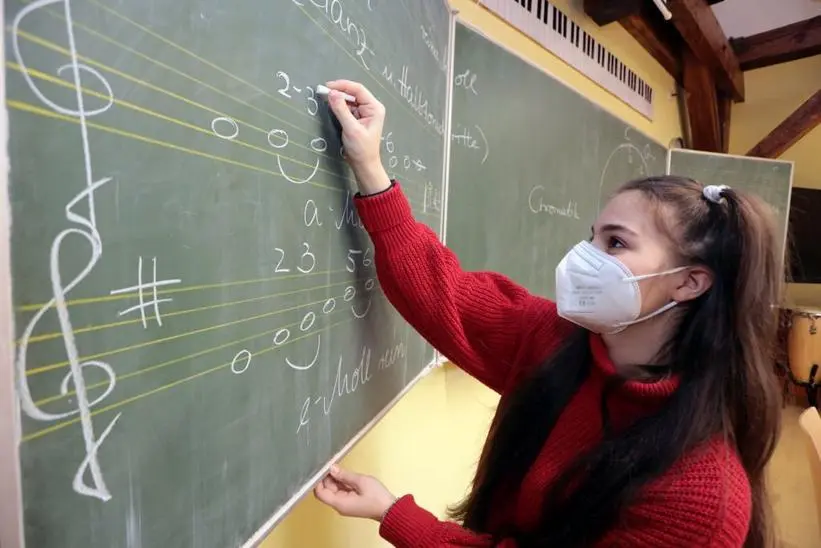Introduction
Music has a unique power to evoke emotions, memories, and deep connections with others. Its influence transcends age, culture, and language. Music education plays a significant role in shaping individuals, communities, and societies. This article delves into the transformative power of music through innovative teaching techniques, highlighting their benefits and impact on students’ lives.
The Evolution of Music Education
Traditional Music Teaching Methods
Historically, music education focused on traditional teaching methods prioritizing technical skills and mastery of classical music. These methods often involved repetitive practice, memorization, and individual performance. While effective in developing technical proficiency, this approach might only sometimes cater to the diverse learning needs of students or foster their creativity and self-expression.
Modern Music Teaching Techniques
Music educators have recently embraced new teaching methods that prioritize engagement, collaboration, and creativity. These modern techniques emphasize the importance of meeting students’ individual learning needs and empowering them to explore their artistic potential. By incorporating innovative teaching strategies, educators can transform how students experience and learn music.
Innovative Music Teaching Techniques
Technology in Music Education
The integration of technology in music education has revolutionized teaching and learning. With digital tools such as music composition software, virtual instruments, and online resources, students have access to a wealth of opportunities to develop their skills and creativity. These tools also enable educators to provide personalized feedback and support to learners remotely.
Gamification
Gamification involves incorporating game elements into non-game contexts, such as music education. By making the learning process fun and engaging, gamification can boost students’ motivation, increase their retention of information, and enhance their overall learning experience. Examples of gamification in music education include music theory games, rhythm challenges, and composition contests.
Collaborative Learning
Collaborative learning encourages students to work together to achieve shared goals. Music education could involve group composition projects, ensemble practice, or peer feedback sessions. Cooperative learning fosters communication, teamwork, and critical thinking skills while promoting community and shared achievement.
Multisensory Learning
Multisensory learning combines sensory inputs, such as auditory, visual, and kinesthetic, to enhance the learning experience. In music education, this approach can include combining visual aids with audio recordings, incorporating movement into rhythm practice, or using tactile instruments like hand drums. Multisensory learning helps cater to diverse learning styles and can improve students’ retention of information.
Project-Based Learning
Project-based learning (PBL) involves students working on real-world projects that require critical thinking, problem-solving, and creativity. In music education, PBL can include:
- Composing original pieces.
- Researching the historical context of a specific musical genre.
- Organizing a community performance.
PBL encourages students to take ownership of their learning and fosters a deeper understanding of the subject matter.
Benefits of Innovative Teaching Techniques
Enhancing Learning Outcomes
Innovative teaching techniques can significantly improve students’ learning outcomes. Engaging multiple senses, fostering collaboration, and embracing creativity can help students develop a deeper understanding of music theory and practice, enhance their technical skills, and promote a lifelong love of music.
Increased Student Engagement
Innovative teaching techniques capture students’ attention and keep them actively engaged in learning. Through gamification, collaboration, and technology, students become more invested in their education and are more likely to persist in their musical pursuits.
Improved Confidence and Self-Esteem
Innovative teaching techniques can help students build their confidence and self-esteem by prioritizing student-centered learning and fostering creativity. As they experience success and overcome challenges, students develop a sense of accomplishment and pride in their musical abilities.
Empowering Students with Disabilities
Innovative teaching techniques are particularly beneficial for students with disabilities. Multisensory learning, adaptive technology, and collaborative learning can create an inclusive environment where students of all abilities can thrive and experience the joy of music.
Conclusion
The power of music transcends cultural and linguistic barriers, and its transformative potential can be unleashed through innovative teaching techniques. By embracing technology, gamification, collaborative learning, multisensory experiences, and project-based learning, music educators can create engaging and inclusive learning environments that cater to diverse student needs. The benefits of these innovative techniques extend beyond improved learning outcomes, fostering students’ creativity, self-expression, and personal growth. In doing so, the transformative power of music education becomes a reality, shaping individuals and communities alike.
FAQs
- What are some examples of innovative music teaching techniques? Some examples include integrating technology, gamification, collaborative learning, multisensory learning, and project-based learning.
- How do innovative teaching techniques improve student engagement? These techniques capture students’ attention, make learning fun, and encourage active participation, increasing employment in the learning process.
- How can innovative teaching techniques benefit students with disabilities? Techniques such as multisensory learning, adaptive technology, and collaborative learning can create inclusive environments that cater to diverse learning needs and empower students with disabilities.
- How does project-based learning work in music education? Students work on real-world projects, such as composing original pieces or organizing community performances, which require critical thinking, problem-solving, and creativity. This approach fosters a more profound understanding and ownership of the learning process.
- Can traditional and innovative music teaching techniques be combined? Absolutely! Educators can blend traditional methods with innovative approaches to create a well-rounded, engaging, practical music education experience.
